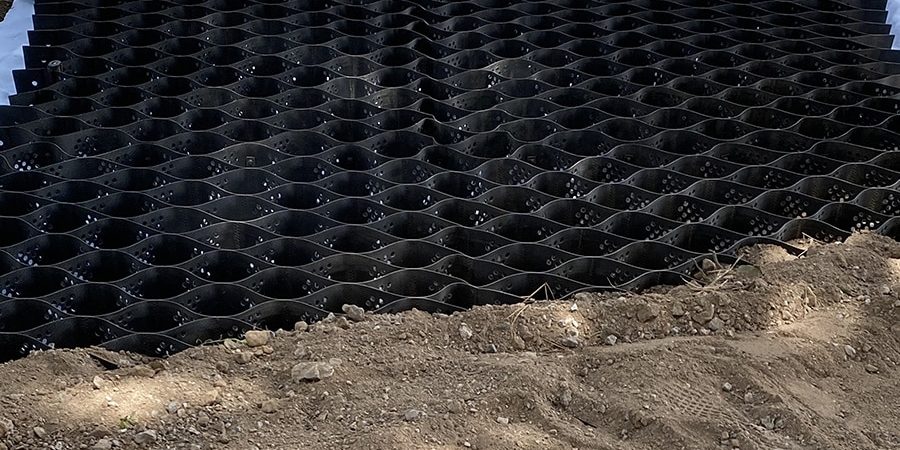If you’ve ever worked on a construction site, you know how tricky weak soil can be. It shifts, it sinks, and it can make even a small job a headache.
Geocells are one of the easiest ways to fix that. They are plastic grids that hold soil, gravel, or sand in place and make the ground stronger and more stable.

They’re used worldwide because they are cost-effective, adaptable, and require minimal maintenance, which makes them a smart choice for many projects.
What Geocells Do
Think of a geocell as a honeycomb you lay on the ground. You stretch it out, fill the cells with material, and suddenly loose soil becomes solid. The material is locked in place, so trucks can drive over it and rain won’t wash it away. The structure also reduces settlement over time, keeping surfaces level longer, which is particularly helpful for areas that get regular traffic.
It’s a simple idea, but it works. Instead of digging deep foundations or hauling in tons of rock, geocells let you use what’s already there. They are light, easy to move, and fast to install. That saves time and effort.
Why People Use Them
Geocells are popular because they solve a few common problems.
- They spread weight out, so roads and paths do not sink or rut.
- They let you use local soil instead of bringing in expensive material.
- They last for years and do not crack like concrete can.
- They help stop erosion. On slopes, they hold soil in place and make it easier for plants to grow.
- They reduce the risk of uneven surfaces and maintenance costs over time.
Where You Will See Them
You will see geocells in a lot of different projects.
- Roads and driveways over soft ground.
- Steep slopes and embankments to stop soil from sliding.
- Retaining walls for small hills or gardens.
- Riverbanks and drainage channels where water could wash the soil away.
They are flexible. You can cut them to shape or layer them for extra support. That’s why both small contractors and big engineering firms use them. They are suitable for temporary solutions as well as permanent installations, making them versatile for changing project needs.
Why They Work
The strength comes from the cells holding the material tight. Once soil or gravel is locked in, it cannot move sideways. It’s simple but effective. You don’t need heavy machinery to install them. You stretch the sheet, fill the cells, compact the material a little, and it’s done.
A Practical Choice
Geocells are not flashy. You won’t see them on a magazine cover. But on-site, they solve real problems. If the ground needs to hold up for a road, a slope, or even a small garden wall, geocells do the job quietly and reliably. They are low-maintenance and can handle a surprising amount of weight without giving way.
Bottom Line
If you want weak soil to stay put without digging deep or using tons of concrete, geocells are worth it. They are simple, flexible, and they work. A little effort now can save a lot of headaches later. Over time, the stability they provide can prevent costly repairs and make life on-site a lot easier.
Watch this space for updates in the Technology category on Running Wolf’s Rant.
Like what you just read? Subscribe To Our Newsletter to stay in the loop.
Feel free to explore our website or check out our Featured Articles.
Looking for a gift for that special person in your life? Check out Netflorist.co.za, South Africa's top online florist and gift service. They offer flowers, gifts, and hampers for all occasions AND reliable nationwide delivery.



